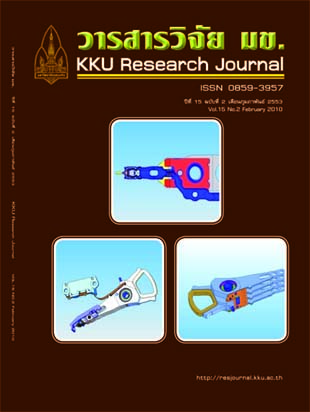The Dyed-Yarn quantity estimation for a cut pile carpet: a case study
Main Article Content
Abstract
The purpose of this paper is to create an equation that estimates the quantity of dyed-yarn needed for the cut pile carpet tufting process. Based on 2,694 collecting data, found that 75 percent of the orders using the current method were flawed. 45 percent of those errors came from overestimation-resulting in a waste of raw material and increase in inventory level and the 30 percent came from an underestimation-resulting in a raw material shortage. In the latter case, the problem was fixed by bringing in more of the raw material (dyed yarn). However, this affects the factoryûs capacity and wager cost. In addition, these problems affect the inventory management policy and make for a higher holding cost. In this paper, the CAT data (the difficulty levels of the tufting process) are changed form from a qualitative scale to a quantitative one. The author then created a dyed yarn estimation model where R = 0.734 and tested the equation by collecting the new 100 orders and compared the current method with the new method-finding an 11 percent decrease in the shortage cases (from 19 to 17 cases) and 30 percent decrease in the average return rate of dyed yarn from the processing (from 14 to 9.8 percent). When adjusted the equation with 5 percent tolerance, the number of shortage cases decreased to 9 orders. This resulted in a 53 percent reduction with the average percentage of unused dyed yarn at 14 percent.
Article Details
How to Cite
Muangnaak, R., & Khokhajaikiat, P. (2017). The Dyed-Yarn quantity estimation for a cut pile carpet: a case study. Asia-Pacific Journal of Science and Technology, 15(2), 113–122. retrieved from https://so01.tci-thaijo.org/index.php/APST/article/view/83145
Section
Research Articles


